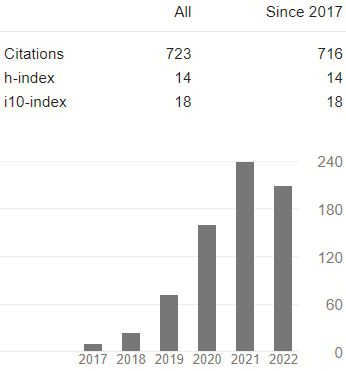Publication Ethics
Publication Ethics
Our ethic statements follows the Code of Conduct of the Committee on Publication Ethics (COPE), Authors and reviewers.
Ethics For Editor
Editors of journals have responsibilities toward the authors who provide the content of the journals, the peer reviewers who comment on the suitability of manuscripts for publication, the journal’s readers and the scientific community, the owners/publishers of the journals, and the public as a whole.
Ethics for authors
This journal is committed to upholding the integrity of the scientific record. As a member of the Committee on Publication Ethics (COPE) the journal will follow the COPE guidelines on how to deal with potential acts of misconduct.
Authors should refrain from misrepresenting research results which could damage the trust in the journal, the professionalism of scientific authorship, and ultimately the entire scientific endeavor. Maintaining integrity of the research and its presentation can be achieved by following the rules of good scientific practice, which include:
The manuscript has not been submitted to more than one journal for simultaneous consideration.
- The manuscript has not been published previously (partly or in full) unless the new work concerns an expansion of previous work (please provide transparency on the re-use of material to avoid the hint of text-recycling (‘self-plagiarism’)).
- A single study is not split up into several parts to increase the quantity of submissions and submitted to various journals or to one journal over time (e.g. ‘salami-publishing’).
- No data have been fabricated or manipulated (including images) to support your conclusions
- No data, text, or theories by others are presented as if they were the author’s own (‘plagiarism’). Proper acknowledgments to other works must be given (this includes material that is closely copied (near verbatim), summarized and/or paraphrased), quotation marks are used for verbatim copying of material, and permissions are secured for material that is copyrighted.
- Important note: the journal may use software to screen for plagiarism.
- Consent to submit has been received explicitly from all co-authors, as well as from the responsible authorities - tacitly or explicitly - at the institute/organization where the work has been carried out before the work is submitted.
- Authors whose names appear on the submission have contributed sufficiently to the scientific work and therefore share collective responsibility and accountability for the results.
- Upon request, authors should be prepared to send relevant documentation or data in order to verify the validity of the results. This could be in the form of raw data, samples, records, etc. Sensitive information in the form of confidential or proprietary data is excluded.
- If there is a suspicion of misconduct, the journal will carry out an investigation following the COPE guidelines. If, after investigation, the allegation seems to raise valid concerns, the accused author will be contacted and given an opportunity to address the issue. If misconduct has been established beyond reasonable doubt, this may result in the Editor-in-Chief’s implementation of the following measures, including, but not limited to:
- If the article is still under consideration, it may be rejected and returned to the author.
- If the article has already been published online, depending on the nature and severity of the
infraction, either an erratum will be placed with the article or in severe cases retraction of the article
will occur.
- The author’s institution may be informed.
Ethics for Reviewers
Peer review assists the editor in making editorial decisions and through the editorial communications with the author may also assist the author in improving the paper. Peer review is an essential component of formal scholarly communication and lies at the heart of the scientific method. In addition to the specific ethics-related duties described below, reviewers are asked generally to treat authors and their work as they would like to be treated themselves and to observe good reviewing etiquette.
Any selected referee who feels unqualified to review the research reported in a manuscript or knows that its prompt review will be impossible should notify the editor and decline to participate in the review process.
Confidentiality
Any manuscripts received for review must be treated as confidential documents. Reviewers must not share the review or information about the paper with anyone or contact the authors directly without permission from the editor.
Unpublished materials disclosed in a submitted manuscript must not be used in a reviewer’s own research without the express written consent of the author. Privileged information or ideas obtained through peer review must be kept confidential and not used for personal advantage.
A reviewer should be alert to potential ethical issues in the paper and should bring these to the attention of the editor, including any substantial similarity or overlap between the manuscript under consideration and any other published paper of which the reviewer has personal knowledge. Any statement that an observation, derivation, or argument had been previously reported should be accompanied by the relevant citation.
Standards of Objectivity & Competing Interest
Reviews should be conducted objectively. Reviewers should be aware of any personal bias they may have and take this into account when reviewing a paper. Personal criticism of the author is inappropriate. Referees should express their views clearly with supporting arguments.
Reviewers should consult the Editor before agreeing to review a paper where they have potential conflicts of interest resulting from competitive, collaborative, or other relationships or connections with any of the authors, companies, or institutions connected to the papers.
If a reviewer suggests that an author includes citations to the reviewer’s (or their associates’) work, this must be for genuine scientific reasons and not with the intention of increasing the reviewer’s citation count or enhancing the visibility of their work (or that of their associates).














